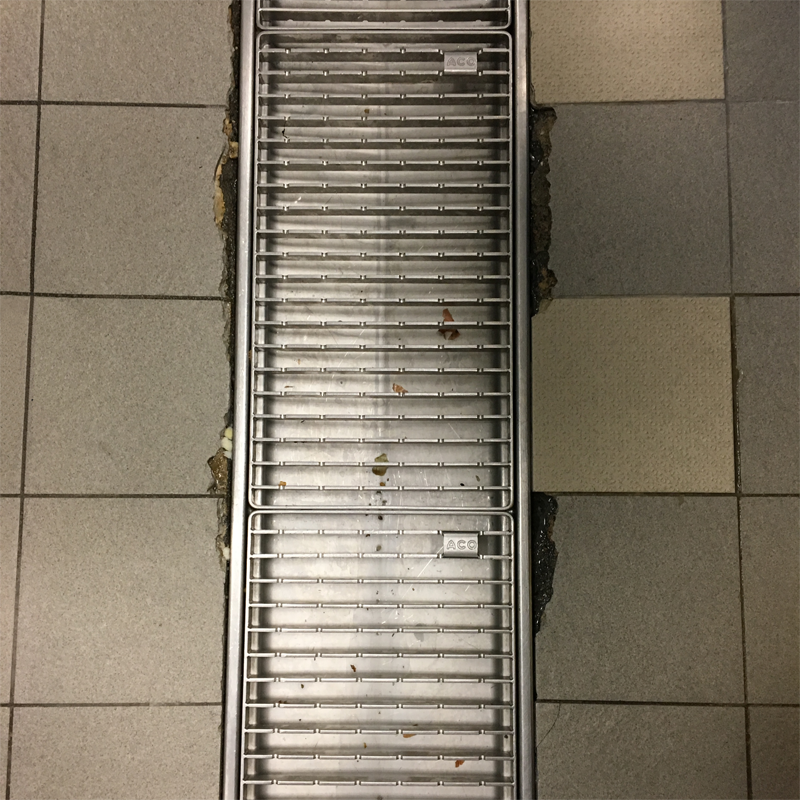L-profile edge case study: Commercial Kitchen
The issue
After cooking, large amounts of water are drained from the pan or dishwasher into the drain. The stainless steel drainage system absorbs heat faster than the underlying concrete and creates stress on the system. Channels expand and the visible channel edge lifts. At the connection between the drainage and the floor, micro-cracks occur and become visible where the channel and tile meet. Subsequently, micro-cracks extend across the tiled floor. With further use, cracks increase and then the tiles start to crack. The cracking is worsened by the dynamic loads of local site traffic (e.g. the transport of handling equipment or vehicles).
- Portions per day: 2000 – 4000
- Personnel: approx. 20
- Kitchen equipment: tilting pans, combined oven
- Flooring: tiled floor
- Drainage: linear channels + large point drainage
Secondary consequences
- Erosion of the floor structure leads to mold and bacteria formation, which can lead to the contamination of food and raw materials
- Erosion of the floor structure enables water to penetrate the floor construction, and in the worst case, water can seep into lower floors
The solution
Use of a flexible joint with an L-profile. The flexible joint absorbs the stresses between the floor and drainage system, allowing expansion. The channel does not press on the floor structure. The L-profile also provides protection against the dynamic stress caused by handling equipment.
